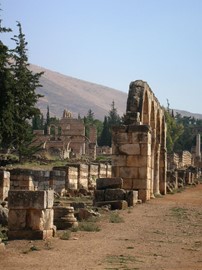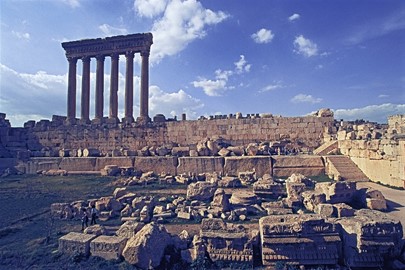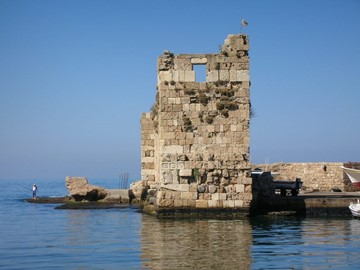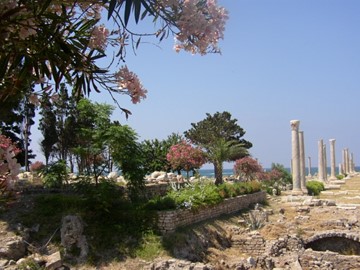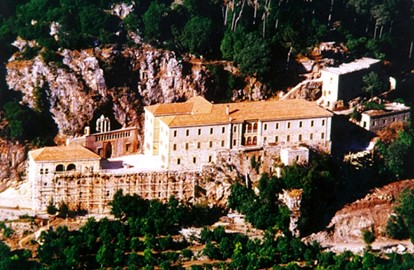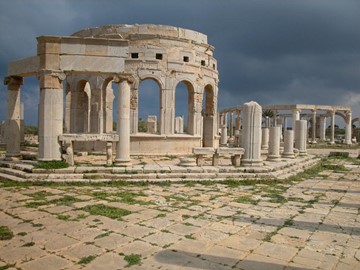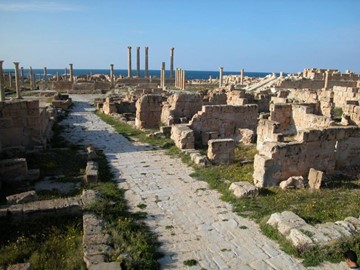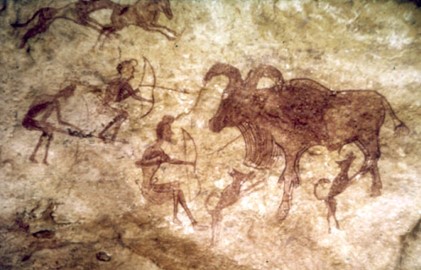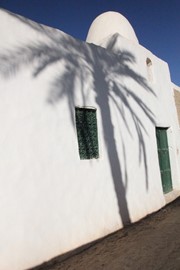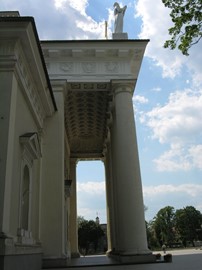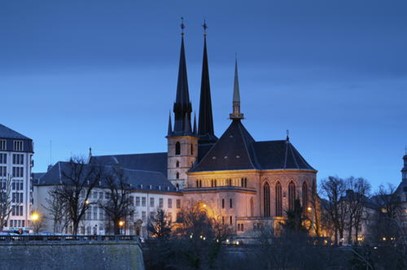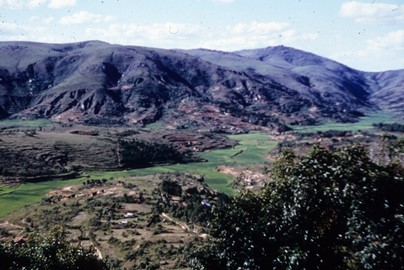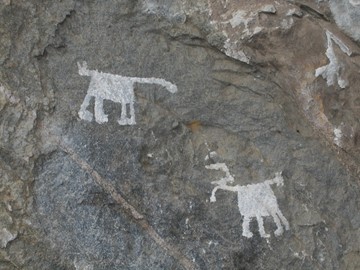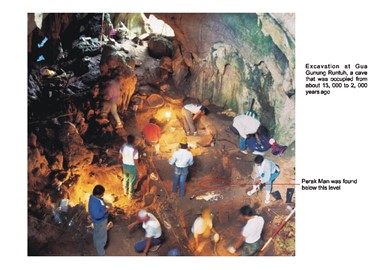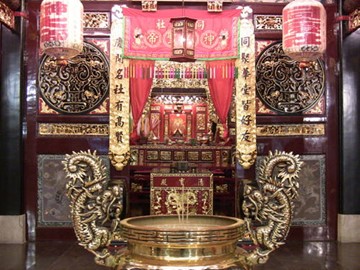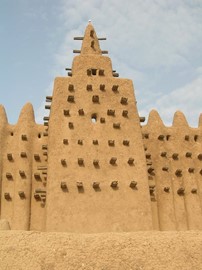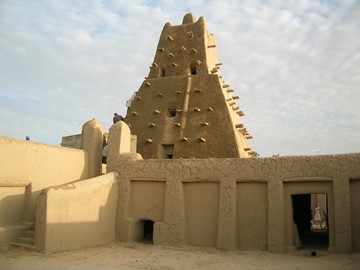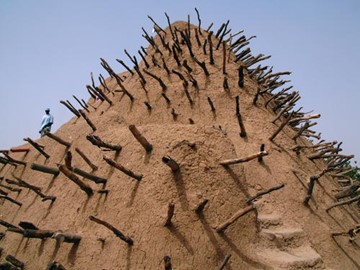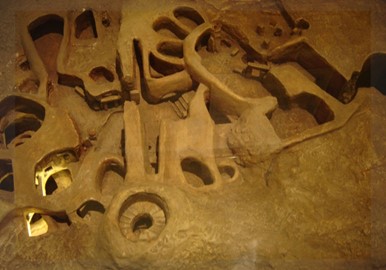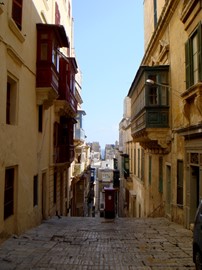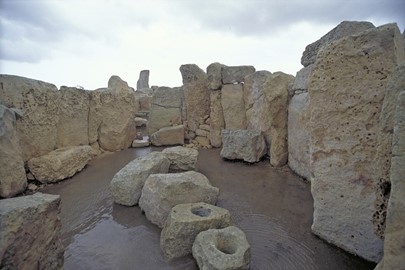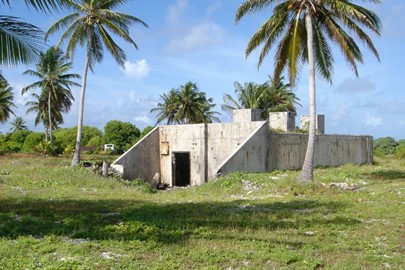category :: cultural
Riga
The Historic Centre of Riga, a UNESCO World Heritage site in Latvia, exemplifies a well-preserved medieval urban landscape blended with Art Nouveau architecture. This vibrant cultural hub features cobblestone streets, historic churches, and elegant buildings that reflect its past as a key trading center in Northern Europe. Recognized for its architectural diversity and historical significance, it showcases centuries of artistic and urban development.
Anjar
Anjar, a UNESCO World Heritage site in Lebanon, is a remarkably preserved example of an early 8th-century Umayyad city. This archaeological gem features a distinctive grid layout with fortified walls, grand palaces, and a sophisticated water management system, showcasing advanced urban planning of its time. Its ruins, including colonnaded streets and public baths, highlight a blend of Roman and local architectural influences. Recognized for its historical value, Anjar offers a unique glimpse into the region... Read More
Baalbek
Baalbek, a UNESCO World Heritage site in Lebanon, is renowned for its monumental Roman architecture, featuring some of the best-preserved temples from antiquity. The site includes the grand Temple of Jupiter, the intricately detailed Temple of Bacchus, and the circular Temple of Venus, showcasing exceptional engineering and artistic mastery. Built on earlier foundations, it reflects a blend of ancient cultures and religious traditions. Its historical significance and striking ruins make it a testament to hu... Read More
Byblos
Byblos, a UNESCO World Heritage site in Lebanon, is one of the oldest continuously inhabited cities in the world, renowned for its ancient Phoenician heritage. This coastal site features well-preserved ruins, including a Crusader-era castle, Roman theaters, and Phoenician temples, showcasing layers of history spanning millennia. Its significance as a trading hub and the birthplace of the Phoenician alphabet highlights its cultural legacy. The picturesque harbor and archaeological treasures make it a testame... Read More
Tyre
Tyre, a UNESCO World Heritage site in Lebanon, is an ancient coastal city renowned for its rich historical and archaeological legacy. It boasts well-preserved Roman ruins, including a grand hippodrome, an expansive necropolis, and a monumental archway, alongside remnants of Phoenician civilization, such as its famed purple dye production. This site exemplifies centuries of cultural exchange and urban development in the Mediterranean.
Qadisha Valley
The Qadisha Valley, a UNESCO World Heritage site in Lebanon, is renowned for its rugged natural beauty and historical significance as a spiritual refuge. This steep-sided gorge shelters ancient monasteries and hermitages carved into cliffs, reflecting centuries of Christian monastic life. Its lush landscapes and cultural heritage highlight a unique blend of nature and human resilience.
Leptis Magna
Leptis Magna, a UNESCO World Heritage site in Libya, stands as a testament to Roman urban planning and architecture with its remarkably preserved ruins. This ancient coastal city features grand structures like the Severan Basilica, an ornate theater, and extensive marketplaces, reflecting its prominence as a thriving trade hub. Its intricate mosaics and monumental arches highlight the sophisticated craftsmanship of the era. Recognized for its historical value, it offers a vivid glimpse into the past of a on... Read More
Sabratha
Sabratha, a UNESCO World Heritage site in Libya, is an ancient Roman city renowned for its well-preserved archaeological remains. The site features a stunning seaside theater, intricate mosaics, and monumental temples, showcasing the architectural grandeur of its past. Founded as a Phoenician trading post, it later thrived under Roman rule, reflecting a blend of cultural influences. Its historical significance lies in its testament to urban planning and maritime commerce in antiquity.
Cyrene
Cyrene, a UNESCO World Heritage Site in Libya, is an ancient city founded by Greek settlers from Thera in 631 BC, later becoming a significant Roman province until its destruction by an earthquake in 365 AD. Renowned for its well-preserved ruins, including the Temple of Zeus, Sanctuary of Apollo, and expansive necropolis, it reflects a rich blend of Greek and Roman architectural influences. Inscribed in 1982, the site has been on the List of World Heritage in Danger since 2017 due to ongoing threats from co... Read More
Tadrart Acacus
Tadrart Acacus, a UNESCO World Heritage site in Libya, is renowned for its stunning rock art and dramatic desert landscapes. The site features thousands of ancient paintings and engravings, dating back over 12,000 years, depicting human figures, animals, and daily life from prehistoric times. These artworks offer invaluable insights into the region’s cultural and environmental history, making it a globally significant archaeological treasure.
Ghadamès
The Old Town of Ghadamès, a UNESCO World Heritage Site in Libya, is an ancient oasis town known as the 'Pearl of the Desert.' Its well-preserved old town features unique mud-brick architecture with a vertical layout: ground floors for storage, family quarters above, and rooftop terraces for women, connected by shaded alleys. This design, developed over centuries, reflects sustainable adaptation to the harsh desert climate. Inscribed in 1986, Ghadamès exemplifies traditional Berber urban planning and cultura... Read More
Kernavė
Kernavė, a UNESCO World Heritage site in Lithuania, is an archaeological treasure showcasing over 10,000 years of human settlement, from the late Palaeolithic period to the Middle Ages. Once a thriving medieval capital of the Grand Duchy of Lithuania, it features five impressive hill forts, ancient settlements, and burial sites along the Neris River, reflecting the region’s rich pagan and Christian history. Recognized in 2004, Kernavė stands as a testament to the evolution of Baltic culture and is often cal... Read More
Vilnius
Vilnius Historic Centre, a UNESCO World Heritage site in Lithuania, is renowned for its well-preserved medieval architecture and rich cultural history. The old town features a blend of Gothic, Renaissance, and Baroque styles, with notable landmarks like the Cathedral Square and Gediminas Tower. Its cobblestone streets and historic buildings reflect centuries of European influence, making it a significant cultural treasure.
Luxembourg Old Quarters
Luxembourg Old Quarters, a UNESCO World Heritage site, is a historic gem featuring a well-preserved medieval fortress, winding cobblestone streets, and charming architecture. This picturesque district showcases a blend of military heritage and cultural landmarks, including ancient ramparts and underground casemates, reflecting its strategic past. Visitors can explore its scenic beauty and rich history, making it a must-see destination in Luxembourg.
Ambohimanga
The Royal Hill of Ambohimanga, a UNESCO World Heritage site in Madagascar, is a historic fortified village that served as a spiritual and political center for the Merina Kingdom. This well-preserved site features royal palaces, burial grounds, and sacred spaces, reflecting centuries of cultural traditions and architectural ingenuity. It remains a symbol of Malagasy identity and a testament to the island's rich history.
Chongoni Rock Art Area
This World Heritage site in Malawi features an exceptional concentration of ancient rock art, with over 120 sites showcasing paintings by hunter-gatherer and farming communities. Spanning thousands of years, the artwork reflects cultural traditions, rituals, and the spiritual beliefs of the people who once inhabited the region’s granite hills. Preserved by natural rock shelters, these vivid depictions offer a rare glimpse into the historical and artistic legacy of central Africa.
Lenggong Valley
Lenggong Valley, a UNESCO World Heritage site in Malaysia, is an archaeological treasure trove showcasing human history spanning over 1.8 million years. This prehistoric site features ancient stone tools, skeletal remains, and cave settlements, including the notable Perak Man, one of Southeast Asia’s oldest human skeletons, dated to around 11,000 years ago. Its well-preserved open-air and cave sites offer critical insights into early human migration, technology, and culture in a tropical environment.
Melaka and George Town
Melaka and George Town, recognized as a UNESCO World Heritage site in Malaysia, are historic cities showcasing a unique blend of cultural influences from Malay, Chinese, Indian, and European traditions. Their well-preserved architecture, including colonial buildings, temples, and traditional shophouses, reflects centuries of trade and cultural exchange along the Straits of Malacca. This vibrant heritage, marked by distinct urban layouts and multicultural legacies, highlights their historical significance as... Read More
Djenné
The Old Towns of Djenné, a UNESCO World Heritage site, are historic settlements in Mali renowned for their unique mud-brick architecture, including the iconic Great Mosque. Established as a trading hub along the trans-Saharan routes, these towns reflect centuries of cultural and commercial exchange. The well-preserved urban layout and traditional building techniques highlight their historical significance and architectural ingenuity. Today, they stand as a testament to Mali's rich heritage and early urban d... Read More
Timbuktu
Timbuktu, a UNESCO World Heritage site in Mali, is a historic city renowned for its role as a medieval center of trade, culture, and Islamic scholarship. Founded around the 11th century, it flourished due to its strategic location on trans-Saharan trade routes, becoming a hub for salt, gold, and knowledge exchange. The city is home to iconic mud-brick architecture, including the Sankore Mosque and University, which highlight its intellectual legacy. Despite facing threats from conflict and desertification, ... Read More
Tomb of Askia
The Tomb of Askia, a UNESCO World Heritage site in Mali, is a striking 15th-century mud-brick pyramid built by Emperor Askia Mohammad I as his mausoleum. This architectural marvel, featuring a stepped design and wooden protrusions for structural support, exemplifies West African Sahelian style and reflects the region’s historical Islamic influence. It served as a royal tomb and mosque, symbolizing the power of the Songhai Empire during its peak. Today, it stands as a testament to Mali’s rich cultural herita... Read More
Hal Saflieni Hypogeum
The Hal Saflieni Hypogeum, a UNESCO World Heritage site in Malta, is a remarkable prehistoric underground sanctuary dating back to around 3600–2500 BC. Discovered in 1902, this multi-level complex was carved from solid limestone and served as both a burial site and a place of worship, housing the remains of over 7,000 individuals alongside intricate chambers like the 'Holy of Holies.' Its well-preserved acoustics and red-ochre wall paintings offer a rare glimpse into Neolithic culture and religious practice... Read More
Valletta
Valletta, a UNESCO World Heritage site in Malta, is a historic fortified city renowned for its Baroque architecture, grand palaces, and stunning harbors. Founded in the 16th century by the Knights of St. John, it boasts iconic landmarks like St. John’s Co-Cathedral and the Grand Master’s Palace, reflecting its rich cultural and military past. Today, this vibrant capital blends history with modernity, offering visitors a captivating glimpse into its storied legacy.
Megalithic Temples of Malta
The Megalithic Temples of Malta, recognized as a World Heritage site, are among the oldest free-standing structures in the world, dating back to 3600–2500 BCE. Built by a prehistoric culture, these temples showcase advanced architectural techniques with large limestone blocks and intricate designs. They served as ceremonial and religious centers, offering insight into early human civilization and its spiritual practices. Today, they stand as a testament to Malta's rich archaeological legacy.
Bikini Atoll
Bikini Atoll, a UNESCO World Heritage site in the Marshall Islands, is a coral reef renowned for its historical significance and unique ecosystem. Between 1946 and 1958, it served as a testing ground for 23 nuclear explosions conducted by the United States, leaving behind a legacy of sunken warships and radioactive remnants. Today, the atoll’s pristine lagoons and diverse marine life attract researchers and divers, while its cultural importance reflects the resilience of the displaced Bikinian people.

